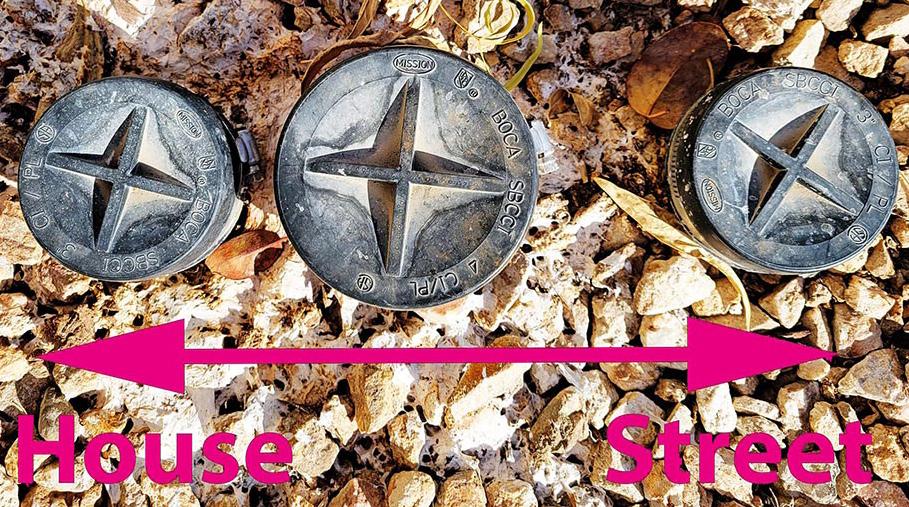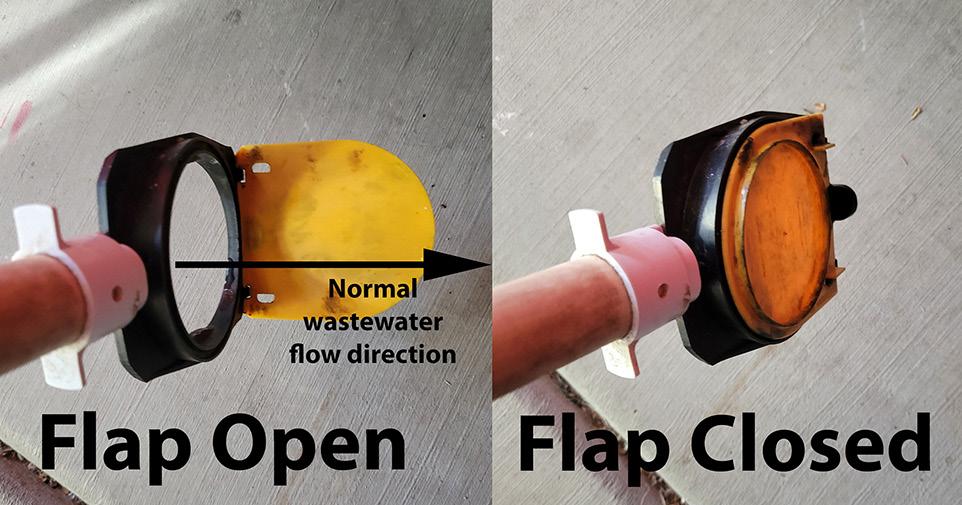
3 minute read
What You Don’t Know Can Hurt You or Cost You Money
HAVING GROWN UP on a farm, helping my dad with various building/ rebuilding projects, I actually know a reasonable amount about plumbing. However, I recently learned a valuable (i.e., costly) lesson that I’m going to pass along to you for free.
As anyone who has owned a home for more than a few years, you know the wastewater (sewage) side of your plumbing is going to clog up some time; the only questions are where the clog is occurring and what do you need to do to remove it. In most cases, it will be a relatively straightforward problem such as the toilet not flushing completely, or a sink or shower draining slowly. Such clogs can usually be cleared using a good quality plunger (not one of those cheap suction-cup shaped ones) or an inexpensive drain snake.

Some clogs, however, are located where the entire house is affected. They are easily recognized because sewage typically begins backing up into your first-floor shower and bathtub drains when you flush a toilet or run water in a sink. Of course, the first thing you want to do is stop flushing toilets and running water in your sinks. After you’ve stopped feeding the monster and have deployed towels and rags around toilets as needed, you’re ready to attack the root of the problem.
My clog was, in fact, one of those whole-house clogs that could have been located anywhere between the last shower, bathtub or toilet and the point at which my sewer line is attached to the city sewer system. As I noted earlier, I know something about plumbing, so rather than stopping to think about or research the three cleanout caps in my front yard (see Figure 1), I began to attack the problem without thinking it through – in my defense, it’s hard to think clearly when no one in the house can go to the bathroom. Accustomed to seeing one or two cleanouts, but never three, I removed the three caps, beginning with the one closest to the street. Nothing exciting happened when the first two caps were removed but removing the one closest to the house relieved the pressure of backed up wastewater in the house resulting in a short-lived fountain of wastewater in my front yard.
Still not stopping to logically think through the situation, I proceeded to use my drain snake to try removing the clog with no success. This is where the costing money started – I called a plumber. When the plumber arrived, he surveyed the situation, brought out his industrial strength drain snake and put it to work. After more than 30 minutes of work, he was making the same progress I had made – none. Then his supervisor called to see how it was going. After he explained his lack of success, the supervisor asked whether we had checked the backflow value. After we both asked what that was, he said the city probably required that one be installed in the line between the house and the street – neither the plumber nor I came from places where flooding was considered much of an issue and, as such, we had never seen them installed. The backflow valve, locate at the bottom of the larger cleanout, is designed to stop waste from backing up into the house if the city sewer line gets clogged up or flooded. It also seems to be designed to clog up over time and actually cause a wastewater backup because once we pulled it out (see Figure 2), the entire system drained, and everything went back to normal – except, of course, for the rather large bill I received due to my ignorance. I’m sorry I don’t have a picture of the clogged-up backflow valve, I wasn’t thinking that far ahead – you’ll have to take my word for how nasty it looked.
So, my first bit of advice is to go out into your yard and gain a basic understanding of how your plumbing works before you are faced with a panic inducing situation. I’m not sure if all homes in Aliante are plumbed the same way, but in Sun City, they are plumbed backwards from what I expected. Normally, the cleanout closest to the house would be used to clean the line from there to the street (see Figure 3); well, at my house, the two joints that make up the u-shape are reversed so the one closest to the house is actually used to clean the line into the house. It doesn’t really matter how yours is plumbed; the important thing is to know how it’s plumbed.
My second bit of advice is to “not panic” but we both know that’s not going to happen. So the important thing to remember is that if you ever have a whole-house wastewater backup, the first thing to do is find the three cleanouts in your yard, remove the cap from the larger one, most likely the middle one, and pull the backflow valve out using the plastic handle. If this doesn’t solve the problem, it’s OK to call a plumber. If pulling the backflow valve from its seat results in your system draining, remove the material clogging the valve, clean it thoroughly, insert it back where you found it and silently thank me for saving you a few hundred dollars!








